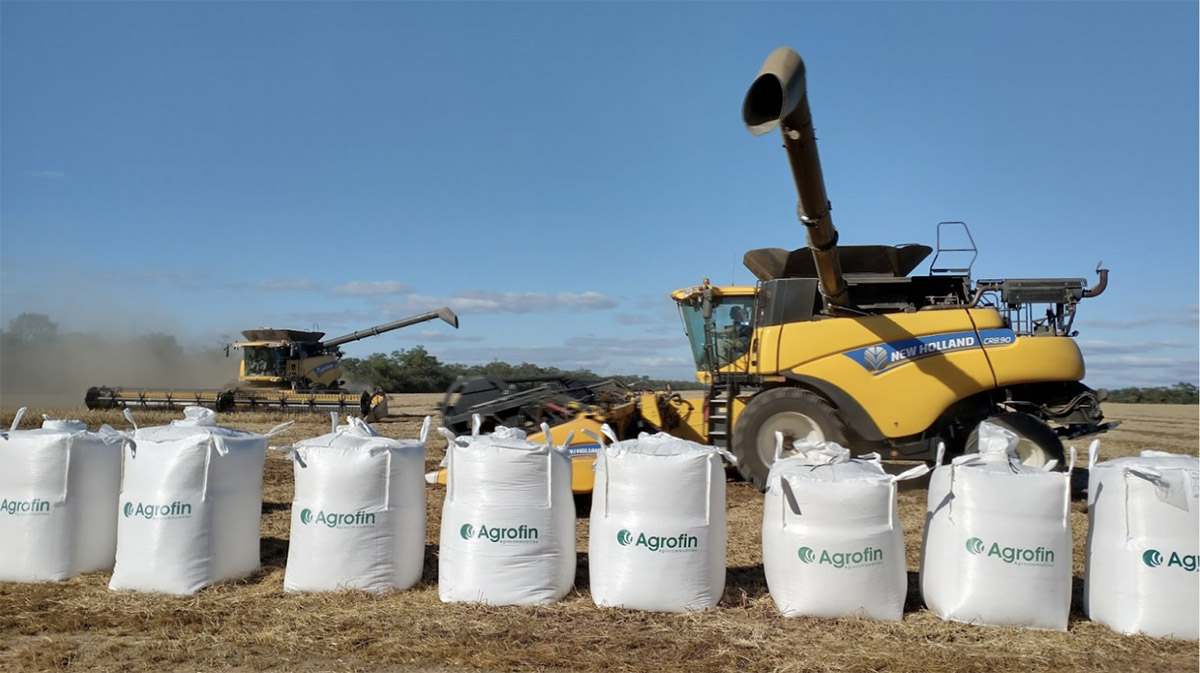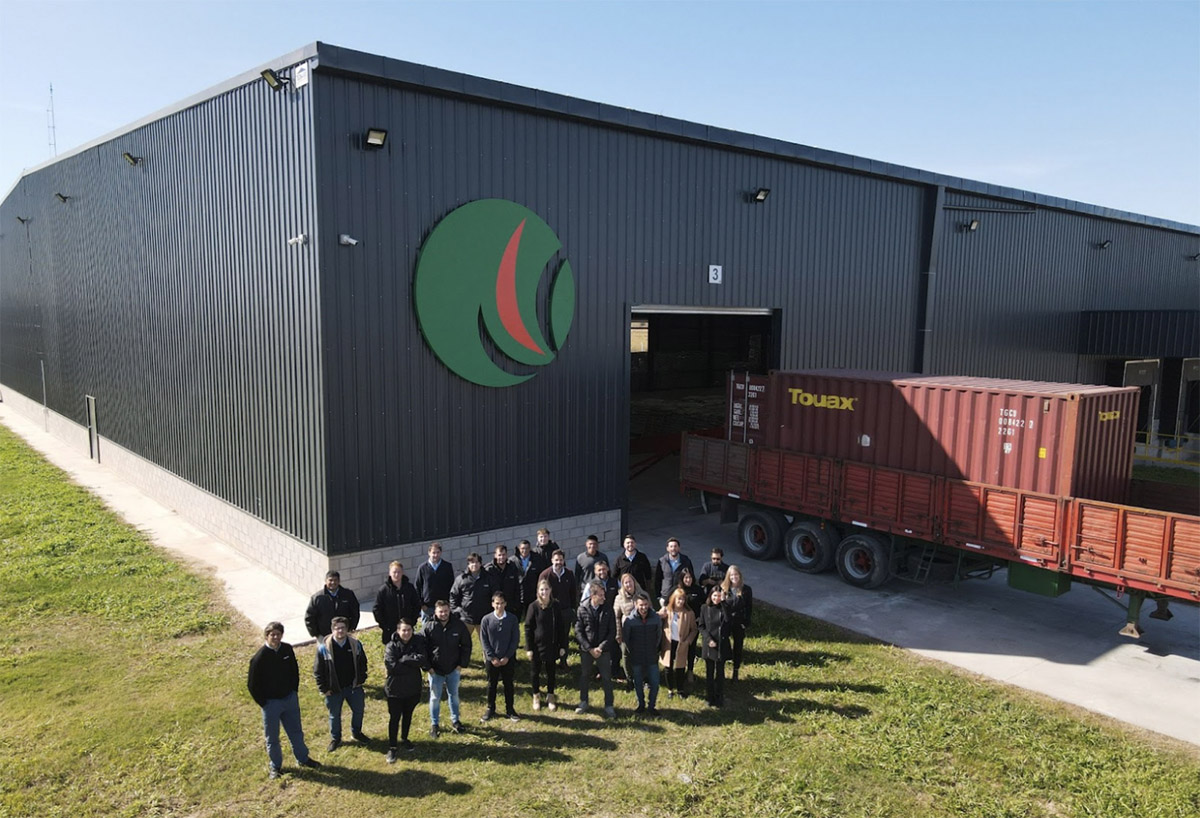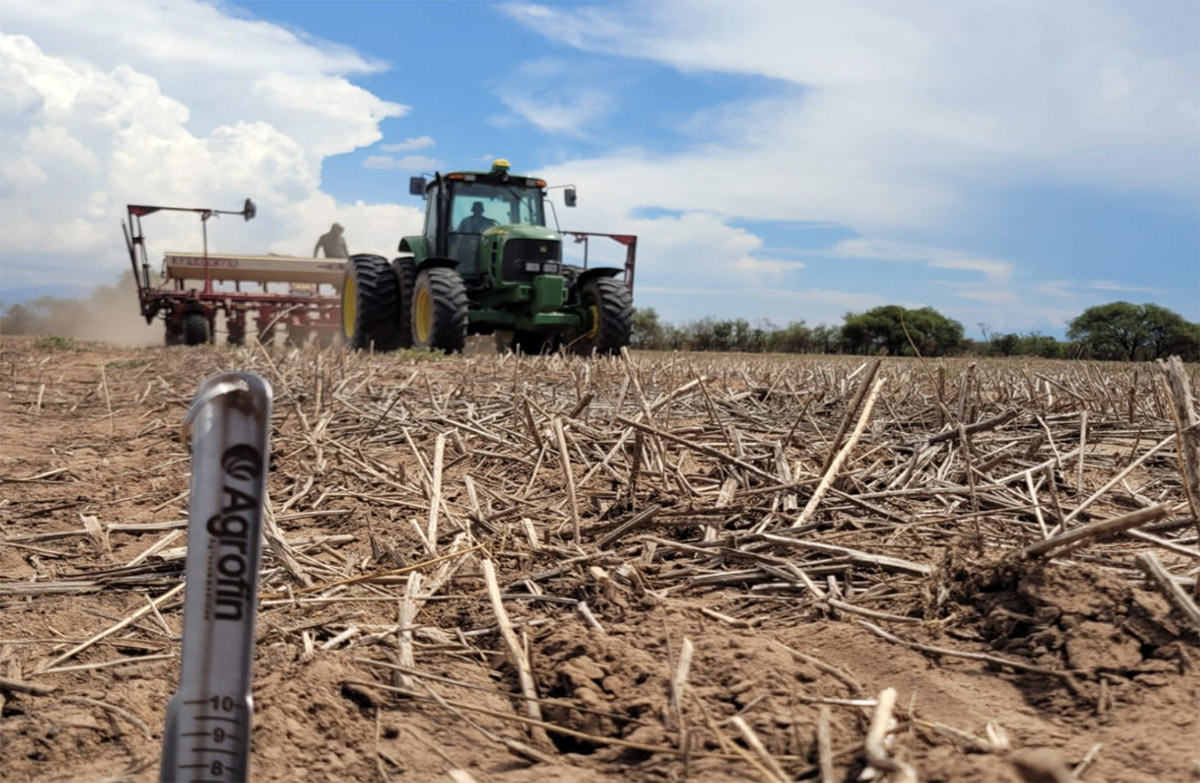February 28, 2023
Lucas Genero talks to Luke Wilkinson about pea and chickpea supplies, the pressure on pulses from other cash crops and why it’s the personal touch that attracted him to the industry.



Crops being harvested in the Santa Fe region
We sat down to chat with Lucas Genero, general manager of Agrofin, a pulses and commodities trader working in Argentina's agricultural heartland. From the company’s headquarters in Rosario, Lucas spoke about his 13 years in the business, the return of reasonable shipping, and how commodity prices are putting the squeeze on pulse acreage.
Hi Lucas! Tell us about how you got started at Agrofin.
I was 23 when I founded Agrofin in 2009. I'd been doing work experience in Sao Paulo, Brazil, in a cereal brokerage firm that worked with similar products to the kind Agrofin works with now. It was an unusual year because there was a lot of interest in Argentina moving toward specialty crops.
In 2008, pulse prices had been high and there had been a lot of discussion in congress around the topic of how much soy and corn would be grown and kept in Argentina – there were agricultural strikes and producers were looking to find alternative crops.
Coming from a family of producers, we understood the dynamic and I’d also learnt what customers wanted after working more on the buying side rather than selling when I was in Brazil. When I got back home, I started to realize that Argentina is one of the world's most important producers of pulses and, if we did things the right way, there was a lot of potential to start a successful business. Now we have nearly 13 years of experience trading significant volumes and we’ve become one of the most important players in the Argentinian pulse trade.
What attracted you to the pulse industry initially?
I studied business management, focusing on finance particularly, which was part of what brought me into the industry, but mostly I was interested in the personal nature of the business, as well as the volatility of commodities — it means you have to pay close attention to what is going on in order to minimize mistakes.
The personalized nature of the business attracted me because you have to develop a bond with customers. You're not just bringing pulses to people, individual clients often require pulses with a particular look and quality, which means you really have to get to know them to meet their needs.
What’s your day-to-day role at Agrofin?
Basically, I'm the general manager but I'm mostly involved in buying and selling. Around 70% of our exports go to the Mediterranean, which means that the morning up until midday is when I’m busiest with sales. Midday onwards is when producers tend to be free to chat so that's when I'll focus more on buying and looking at the prices on offer.
“With carryover seriously diminished, buyers are beginning to feel the scarcity as pulse prices are still high, even with the drop in maritime freight prices.”
Could you run you through the different pulses that Agrofin works with?
Roughly 50% of the products that we export are beans – that's our main product. White alubia beans are our main product, but we also work with cranberry beans, light and dark red kidneys, mung, adzukis, black beans and round imperial beans, as well as some peanuts and grains when they are available here. The second most important product for us is chickpeas, then we also export a fair amount of lentils and green and yellow peas.
You mentioned that a lot of Agrofin’s pulses go to the Mediterranean. Where else do you export to?
White alubia and cranberry beans do mainly go to the Mediterranean – southern Europe, North Africa and the Middle East. Dark reds mostly go to both northern and southern Europe, whereas light reds go to Central America and the Caribbean. Our black beans also tend to go to Latin countries in the Caribbean and all around South America – Brazil, Chile, and Peru, among others.
Our cinnamon beans mostly go to Portugal and Spain, then the round Imperial beans mostly to Turkey. Chickpeas are eaten all around the world but our biggest buyers are in the Middle East, Far East, and India and Pakistan when they are buying. Mung and adzukis usually go to the Far East – the Philippines, Malaysia, and Vietnam, as well as other countries in Southeast Asia.
For peas, the main buyer from Argentina is Brazil but China has become a very important buyer for us too. Green peas are also bought in West Africa.

The Agrofin team
Let's talk a little bit about pulse production in Argentina. How have fluctuations in commodity prices and rising production costs affected pulse acreage in Argentina this year?
The reactions and price rises in the stock market don't have an immediate relationship with pulse prices in the short term. With commodities, the price can change instantly when contract agreements are formed but this doesn't happen with pulses.
Why is that? Well, first and foremost it's because pulse prices are formed as a result of real supply and demand – there isn't the same financial speculation that happens with commodity contracts where 30 or 40% of the price is just financial speculation from big investment funds with an interest in the deals.
When there are price incentives to produce commodities, this means that pulse acreage reduces. Argentina isn't immune to that – it happens and it's happening right now. It means that when you go to negotiate real supply and demand, you might not have the volume you need and this means pulse prices go up.
At the end of 2021 and throughout 2022 when pulse acreage started to go down, there wasn't a sense of scarcity of pulses because we came into those seasons with significant carryover. Added together with production issues that have reduced supply significantly, farmers had more incentive to produce other crops and pulse acreage dropped as a result of that. Today with the carryover I mentioned seriously diminished, buyers are beginning to feel the scarcity now as pulse prices are still high, even despite the drop in maritime freight prices.
From the middle of 2022 until the end of the year, we began to see freight stabilize – we definitely have more reasonable prices now, but the FOB prices haven't changed because there is still scarcity of product.

Shrinking acreage may mean pulse stocks become smaller in 2023
How bad is the situation, do you feel?
I don't think the situation has become as critical as it could be but we’re going to have to see in the first quarter of this year because commodity prices are still very high and the crops are also easier to produce and sell. As such, there is still an incentive to reduce pulse areas.
“This year, a harvest of 60 – 70,000 tons was predicted with a view to 50 – 60,000 tons available for export. It seems we’ll be lucky if we have 40 – 50,000 tons in the end.”
How has climate affected production?
It is an aggravating factor. Climate difficulties have made it difficult to get the extraordinary harvests we need – we've ended up with average to mediocre harvests instead.
To give you an idea of the climate issues we had during the second quarter of 2022, in the main production zone it has been the worst winter - in terms of rain - for the past 100 years. We also had the worst harvest of lentils and peas in the last 50 years – Argentina usually produces between 100–120,000 tons of green peas, of which between 60–70,000 tons are exported. In 2021 there were big pea harvests because prices and conditions were relatively good, but this year many farmers ended up not having enough to even seed, meaning they'll need to import peas, which is something that has never been necessary before.
Peas, lentils, and chickpeas are all the same in this respect. Argentina's production of wheat will be roughly 50% of what is usually produced – all because of a lack of water.
Chickpea seeding intentions were especially important this year because it had become clear that global stocks were dropping and Argentina is one of the first of all the chickpea harvests, allowing us to cover the gap in supply until the Indian harvest comes. This year, a harvest of 60 – 70,000 tons was predicted with a view to 50 – 60,000 tons available for export. It seems we’ll be lucky if we have 40 – 50,000 tons in the end.
It is unlikely there will be an instant recovery of chickpea stock – it will take at least 12 months, which means that producers will prioritize retaining stock for seed over selling it.

Changes in climate may be leading to an increase in average and below-average harvests
What do you see as the solution to these issues of low stocks and a lack of supply in the future?
The solution in future is that commodity prices come down and that acreage goes up! If you don't have an increase in acreage, it's difficult to see how the situation can change, but in order for it to change we may need a couple of years.
We were delighted to see you join us at the Americas Pulse Congress in Cancún in December. How was the experience for Agrofin?
For us it was very productive, especially in terms of understanding the Mexican market, which we've spent a lot of time working in over the years. It's difficult to enter the pulse market there, mainly because there was always a preference towards the USA and Canada. We used to export specialty cereals, such as sesame seeds, cilantro, and sunflower seeds, which were markets where Argentina was the first option.
The Americas Pulses Congress was really important for me to understand the dynamic of the black bean market so that we might better understand what they need, how they need it, and when. It was the first of this type of event in Mexico but it certainly shouldn't be the last.
That's great to hear. Lastly, could you give me an idea of the goals you have for Agrofin's future?
The goals we have for Agrofin are those of a company that is careful and conservative, always trying to be secure in our choices. We want to keep professionalizing the job we do everyday at the company and we hope to position Argentina at the top of the conversation when it comes to professionalization – we want to be seen as one of the first points of reference globally in the pulse industry.
Disclaimer: The opinions or views expressed in this publication are those of the authors or quoted persons. They do not purport to reflect the opinions or views of the Global Pulse Confederation or its members.